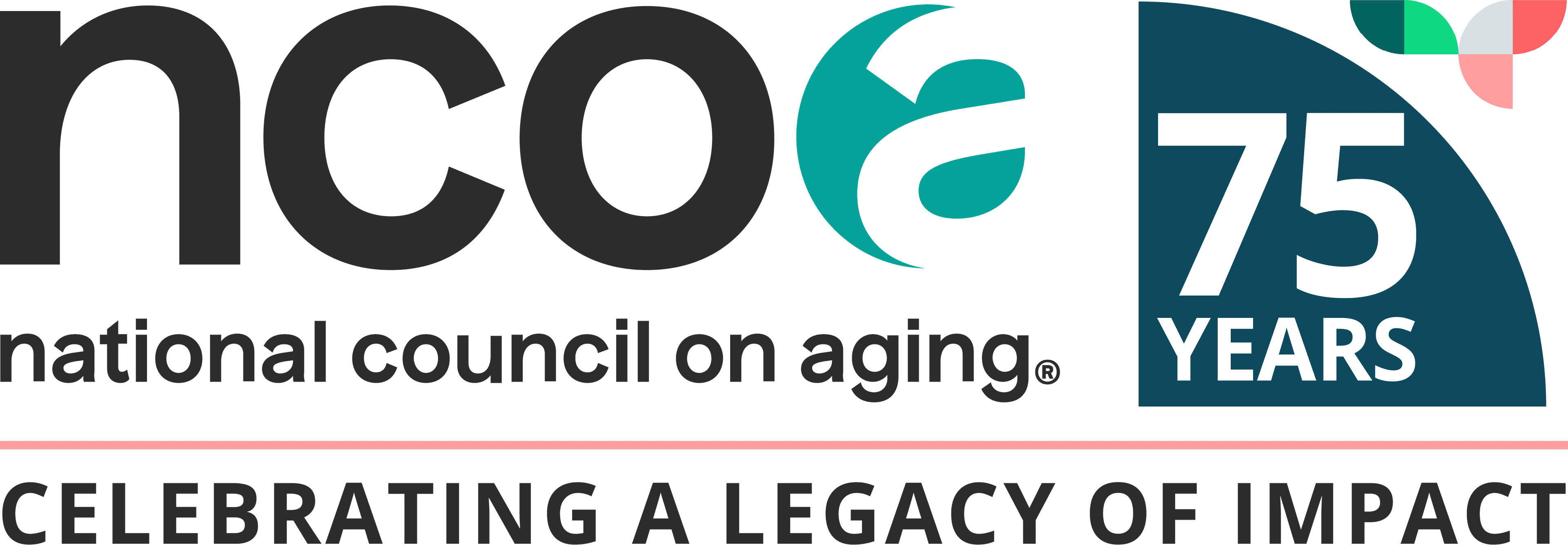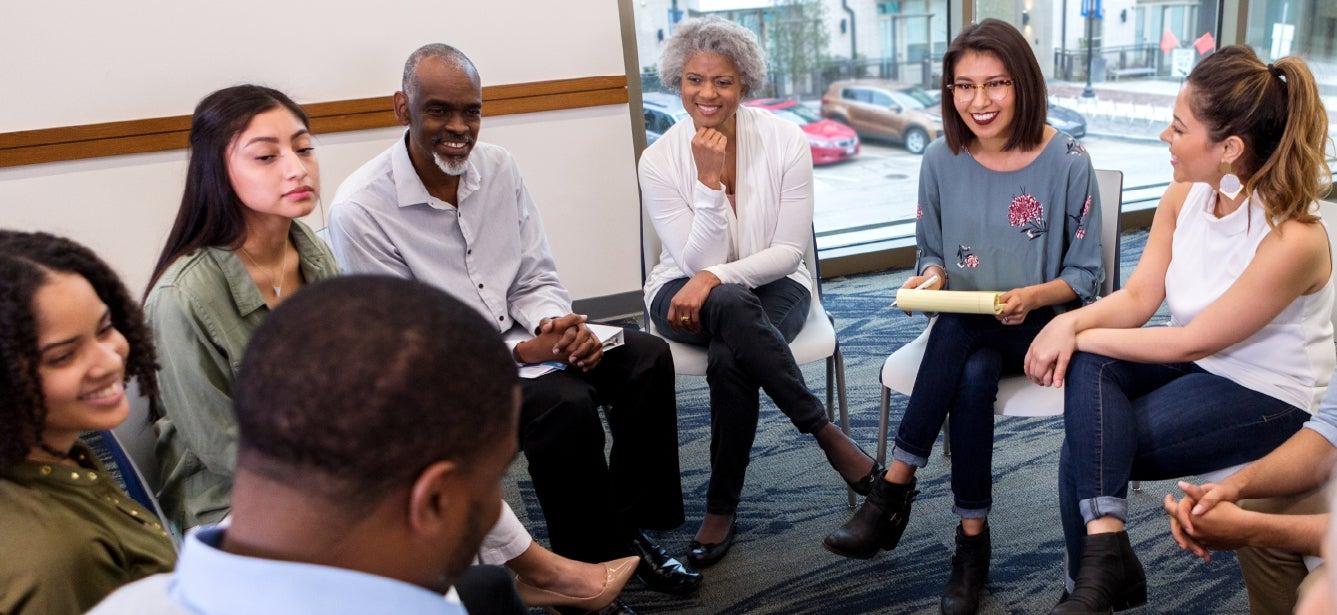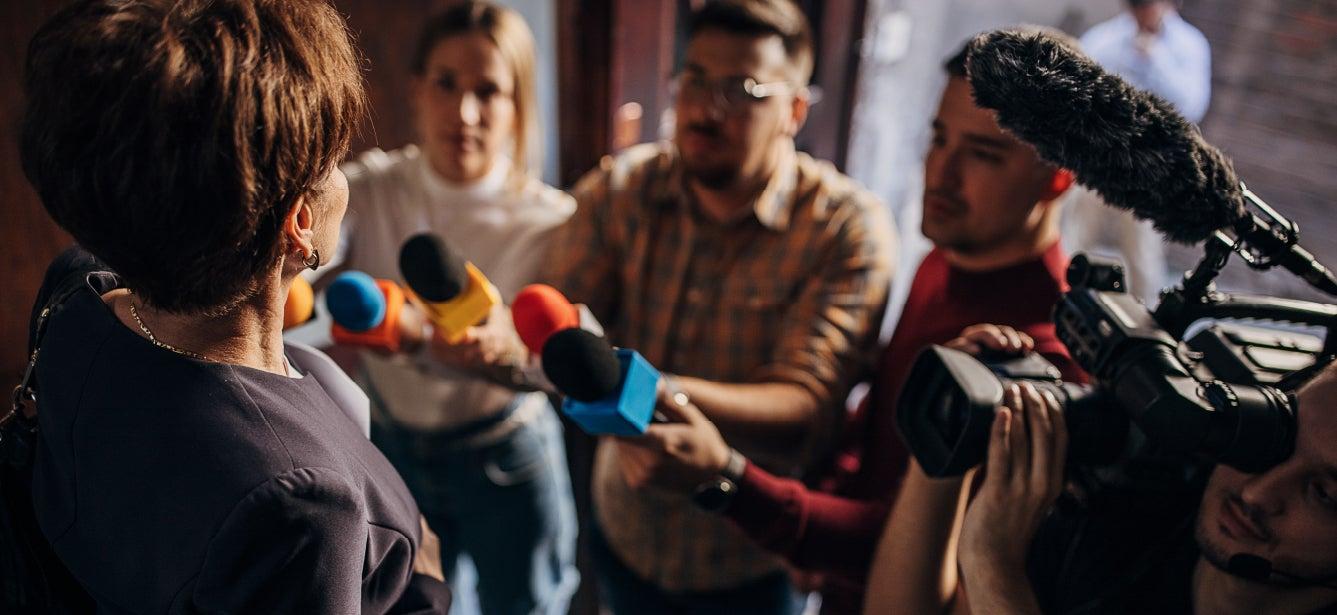Falls Prevention Awareness Week Public Relations Toolkit

This toolkit includes everything needed to spread the word about preventing falls, including a planning calendar, a sample calendar announcement, media advisory, and press release; and tips and sample scripts to pitch reporters.
- Making the Most of Your Media Moment Recording: Learn how to engage with your local media and increase falls prevention education to older adults and your community. Watch NCOA's webinar, featuring Simona Combi, NCOA's Public Relations Manager.
How to get media attention for your organization
- Identify reporters at your local outlets who cover the issues that you’re interested in.
- Reach out in advance. Reach out to media outlets prior to September to let them know about your plans for Falls Prevention Awareness Week.
- Sample Pitch: “We are holding an event that showcases evidence-based programs that help older adults prevent falls and wanted to let you know about it now, so you can plan to cover it if you are interested. You are welcome to film the event, and we’d be happy to connect you with our director/spokesperson and participants for interviews. Falls prevention is a team effort. It’s important for your viewers to know that they and their loved ones can take a few simple steps to be safe.”
- Plan your story. Think about the kind of story you would like to see in your local media and determine what elements it might include:
- Identify older adults who would be willing to talk to reporters about the importance of falls prevention. Reporters prefer to have a human-interest story. Tip! Ask a participant from an evidence-based falls prevention program to share how their participation in the program has helped them stay independent and falls free.
- Identify a spokesperson from your organization that the reporter can interview.
- Gather videos and photos that illustrate your involvement in falls prevention efforts and your impact in the community. Save these files to a cloud service (i.e. Box, Dropbox) that will allow you to easily share the files with the reporter via a link.
- Preparedata points that will deepen the reporter’s understanding of your impact. You might consider sharing data on the number of people you have served in the past year(s), how many prevention workshops you held, data on the return on investment of falls prevention programs, and national or local falls statistics. Tip! Reach out to your state’s falls prevention coalition to access relevant data about your state or region.
- Reference related stories. When reaching out to reporters, mention previous stories they have written about observance days or community events. This shows them that you have researched them before and are familiar with their work.
- Persevere and do not feel discouraged when reporters do not get back to you right away. Follow reporters on social media to stay in the know about their work.
- Notice a story from a reporter that could have benefited from your input? Reach out to mention that you would love to help provide a different perspective or more detail next time this topic is covered.
- Know your audience. Frame your pitch as information important to the community and the reporter’s audience.
How to get media attention for your event
Getting media attention for an event requires planning and follow-up. Use the sample timeline and templates below as useful planning tools to make your pitch a success!
Holding a virtual event? Make sure the event can be easily monitored by the media and that your organization’s spokesperson and community participants are available to be interviewed either by telephone or video call.
1 month before your event…
Start building or updating your media list. Make a spreadsheet with reporters’ names, contact information, and outlets you want to cover your events. Review the guidance below for identifying relevant newspaper, radio, and television contacts.
For newspapers:
- Identify the editor or reporter who covers community events as well as any reporters who cover issues related to older adults, healthy aging, fitness and health, or caregiving. Note the reporter’s name, email, and phone number.
- Determine if your local and/or community newspapers accept calendar announcements. Note where to send the announcement, the information to include, and how far in advance the paper needs them.
For radio and television:
- Collect phone numbers and emails for the station assignment editor.
- Call and ask for the phone number and email address of the producer of the specific show where you would like to appear. Tip! Generally, local news stations include community and non-policy issues in the morning show and in the early evening newscast.
- Stations with a local lifestyle show may have a different booker for guests or stories. Check their website for contact information. Tip! Consider asking the host if they would participate in one of your activities (if appropriate).
- Ask if the station or website accepts calendar announcements. Find out where to send them, what information you should include, and how far in advance the station needs them.
3 weeks before your event…
- Evaluate your media contacts. Determine which contacts you want to personally invite to cover your event, which contacts you want to invite with a media advisory, and if there are any you only want to alert with a press release.
- Send out your calendar announcements. Edit this calendar announcement template and distribute it to local media based on the list you’ve collected.
- Pitch media. Use the sample pitch included in this guide to approach the specific reporters and assignment editors you have identified about doing a story on your event. Tip! Reporters like an engaging local story with human interest!
- Prepare and distribute a media advisory. Use the sample media advisory included in this guide. Send the advisory via email to the media list you’ve collected.
- Promote your event across your social media channels to reach a broad audience that may include prospective attendees, reporters, and local influencers.
- Spread the word. Encourage your participants to tell their friends and families about your event and share your social media posts. You never know who your network knows! An attendee may have an association with members of the media that will give you a head start.
10 days before your event…
- Follow up with the media contacts you pitched to see if they decided to do a story. Tip! Offer to help coordinate interviews or photos and provide background that will enhance and give context to the story you pitched.
- Develop a strategy to ensure a big turnout for the event, including registration reminders, emails, and follow-up phone calls to older adults and their families.
- Let older adults know there will be press at the event, and let the press know there will be older adults they can speak with.
- Develop a list of specific older adults with stories to tell and connect media with them when appropriate.
1 day before your event…
- Email a final media advisory or news release to newspapers, daybooks, radio stations, and television stations. Be sure to include a phone number where reporters can reach you throughout the day.
- Follow up with the media you invited to see if they are planning to cover your event, if they haven’t already committed to attending.
Your event day...
- Carry your cell phone and check your messages frequently. Often, media outlets do not decide until the last minute whether to cover an event.
- Assign a staff person to meet and greet reporters. This person will also be responsible for helping the reporter arrange any interviews or photo opportunities.
After the event…
- Thank reporters for covering your event via phone call or email. Tip: this is a great opportunity to offer to be an ongoing resource for any future stories about aging or aging policy
- Compile your stories, articles, and photos in a special section on your website to highlight the accomplishments of your event.
- Highlight the article or story on your social media channels.
- Share your success! Tag NCOA in your social media posts so we can amplify your work. Check out the social media toolkit for best practices on posting to social media.
How to get started
Media pitching tips
A news pitch is very similar to an elevator pitch in business.
There are a few points you want to make in your pitch—some will be generic and apply to all reporters, whereas other recommendations depend on the type of news organization you are in contact with. Whether your pitch is in writing or by phone, it should include the elements below.
General tips
- The beginning of your pitch should highlight the event’s importance and relevance. Use a short, action-oriented subject line to get reporters interested in opening your email.
- Emphasize why the story is important to the community and the audience the journalist covers. For Falls Prevention Awareness Week, you could point to the dangers that falls pose to older adults, the statistics (including the serious injuries and deaths, the economic and emotional costs in your local community and/or state), the savings associated with evidence-based falls prevention programs, and the growth of the older population and how this will continue to impact more people in the community.
- Emphasize easy it is for older adults to use Falls Free® CheckUp, NCOA’s online tool to assess personalized falls risk.
- Emphasize the role your organization plays in the community and what you are doing to address the issue through this event.
- Briefly describe the event and why it may be interesting or unique—whether it’s the event itself or the people who are participating.
Specific pitches by medium
The second part of your pitch should make an argument for why this is a story that will work specifically for the reporter’s medium:
- TV reporters love stories that have interesting images and action. Highlight impactful visuals the reporter can capture as part of this story. Upload photos and videos from previous falls prevention events to a cloud service (i.e., Box, Dropbox) and share the link with the reporter. Tip! Do not send files as email attachments.
- Tell the journalist about the type of impactful images the event will provide (i.e., evidence-based falls prevention program, older adult exercise classes, demonstrations for keeping your home safe as you age, etc.)
- TV reporters hate to cover stories that are just people giving speeches at a podium. If your story includes testimonials from clients or success stories, ask your speakers to provide digital pictures of themselves or determine if they would be open to having their photograph taken in their home. Tip! Photos taken in an older adult’s residence can create an intimate portrait that will help to demonstrate the important work your organization engages in.
- Radio reporters like events that include sound. Events with speeches, singing, or interviews make for good radio. Even more than TV, radio reporters rely on interviews, which require a spokesperson and interviewees who can convey your messages in a clear and compelling fashion. Line up speakers in advance and train them on what to say by providing them with key talking points. Consider giving access to event participants in their homes.
- Print and digital reporters like information and data. Statistics and facts are especially important as these news sources usually must write much more than TV and radio reporters. They also appreciate photo opportunities, infographics, or other high-quality visuals. These reports also appreciate access to spokespersons and interviewees who can speak compellingly. Train your interviewees and provide them with key talking points they need to convey.
Hosting an online event? Emphasize that reporters will be able to access it live and record it, or you will make a recording available as soon as possible. Encourage the reporter to complement the story by completing interviews through Zoom or other similar platforms.
Examples of successful media engagement
Each year, state falls prevention coalitions and their partners successfully engage media to highlight their Falls Prevention Awareness Week activities. Highlights from previous years include:
- In Oregon, television interviews highlighted the role of physical therapists in falls prevention by depicting a patient working with their physical therapist.
- Source: Jamie Caulley, Providence Senior Health, Oregon Falls Prevention Coalition
- “I was part of an interview for a Delaware Radio Station about the falls prevention awareness [activities] we were providing as part of the health fair.”
- Source: Trevor Mahoney, University of Delaware Physical Therapy Clinic, Delaware Falls Prevention Committee
- In Tennessee, “Hamilton County participated in a TV interview with an estimated reach of 15,000.”
- Source: Lisa Fuller, University of Tennessee Extension, Chattanooga, and Tennessee Fall Prevention Coalition
Sample pitches to reporters
The most personal kind of contact you can have with a reporter is to send them a pitch. Below are two suggestions of how to pitch reporters about your activities. Pitches should include a story idea and information about the data and audiovisual elements you can provide to better tell the story. Be sure to customize these pitches and adapt them for email or telephone. Try to make your initial pitch 1-2 weeks in advance and then follow up once or twice with new information about the event as it gets closer.
Email Pitch
Dear [REPORTER’s NAME]:
Did you know that falling is NOT a normal part of aging?
Yet, falls remain the leading cause of serious injuries and death for older adults. The good news is they are preventable, and there are proven steps people can take to reduce their risk.
September 18-22, 2023, is Falls Prevention Awareness Week, sponsored by the National Council on Aging. [ORGANIZATION] is hosting an event locally to get the message out. [DESCRIBE THE EVENTAND WHY ITS NEWSWORTHY AND EXCITING.]
The event also will feature a free online falls risk assessment tool available to individuals across the country. Visitors to www.ncoa.org/FallsFreeCheckUp can complete a short survey that screens them for the most common falls risk factors.
Please join us on [DATE OF EVENT], for [NAME OF EVENT OR VIRTUAL LINK] to see how participating in Falls Prevention Awareness Week can be life-changing for older adults.
I would be happy to talk with you about our programs and services or put you in touch with some older adults who have benefited from them. You can reach me at [PHONE] or [EMAIL].
Sincerely,
[YOUR NAME]
[EMAIL SIGNATURE or TITLE/PHONE]
Phone Pitch
YOU: Hello, my name is [NAME, TITLE], and I’m calling from [ORGANIZATION]. Do you have a few minutes to hear about a great event we are organizing here in [LOCATION]? I know you are busy, and I promise to be brief.
REPORTER: Okay
YOU: September 18-22, 2023 is Falls Prevention Awareness Week, a national campaign to educate older adults, their caregivers, and health professionals about the dangers of falling and the steps to prevent falls. We will be sharing a free online tool that helps older adults assess their falls risk and take steps to prevent them: www.ncoa.org/FallsFreeCheckUp. As you may know, falls are one of the major causes of serious injuries and deaths for older adults, and the long-lasting effects of a fall are not just physical but also economic and emotional. [ORGANIZATION] is hosting [EVENT AND DESCRIPTION] here in [LOCATION] as part of this national initiative. It’s happening [DATE AND TIME].
VARIATION 1
REPORTER: Sorry, I don’t cover these topics [OR ANY OTHER KIND OF NEGATIVE REBUTTAL].
YOU: I understand. Who else in your newsroom do you think might be interested? I would really appreciate their name, email, and phone, so I can try with them. Is there an editor or assignment desk person or maybe your public affairs director?
REPORTER: [Either gives you the names or not]
YOU: Thanks so much for your assistance. Have a great day.
VARIATION 2
REPORTER: Tell me more.
YOU: [THREE POINTS ABOUT WHY YOUR EVENT IS EXCITING, INTERESTING, NEWSWORTHY]. I am happy to arrange interviews with a few of the [NUMBER of] participants, as well as [DESIGNATED SPOKESPERSON]. We are also happy to share our online assessment tool that helps people determine their risk of falling and the steps they can take to stay falls free. If you give me your email, I am happy to send you our media advisory and set up any interviews you need before, during, or after the event, and help you with any visual elements or background for your story.
REPORTER: Ok, here’s how you can reach me.
YOU: Excellent, thanks for your time, and I will send you details as soon as we hang up and look forward to helping you put together a great story. Meanwhile, can I give you my contact information as well? [PROVIDE YOUR CONTACT DETAILS]. Thanks again.



